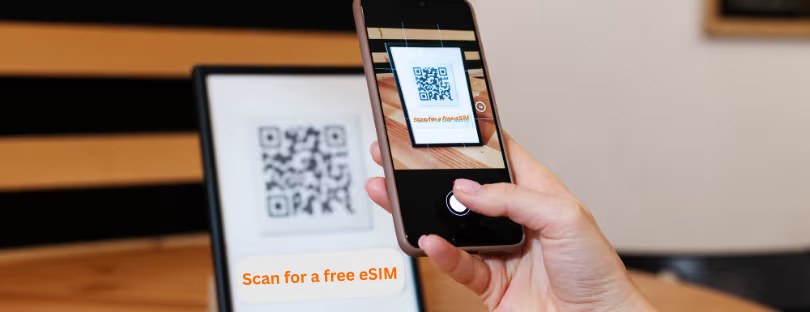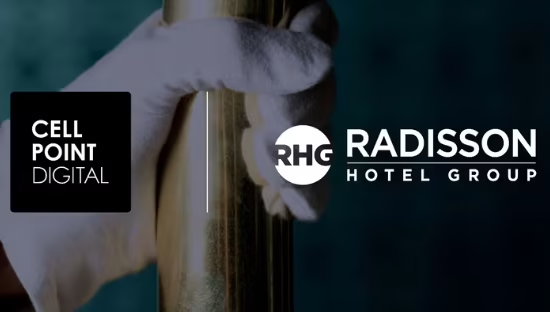
Connectivity Isn’t a Side Product of Travel — It Is the Travel Experience
Let’s be honest: if your trip doesn’t have a stable internet connection, was it even a good trip?
Sure, the old-school idea of travel was all about “disconnecting” — going off-grid, living in the moment, journaling in notebooks. But today’s traveler doesn’t see connectivity as a distraction from the travel experience. It is the experience.
That’s right: we don’t just have connectivity when we travel. We need it to navigate, translate, book, share, work, stream, pay, check-in, and often even access the destination itself. And yet, too many in the tourism and hospitality industry still treat it like a side dish.
🌐 Connectivity is the glue that holds modern travel together
Think about your last trip. What were the first five things you did after landing?
- Open Google Maps
- Message your Airbnb host or hotel
- Look up public transport options
- Translate a restaurant menu
- Share a quick photo or video on Instagram
Each of those moments is powered by connectivity. Without it, you’re stuck at the airport, hoping for decent signage and guessing your way through a foreign city like it’s the 90s.
Today’s traveler isn’t just looking for beautiful places. They’re also looking for seamless, empowered experiences. If you can’t find your way, read reviews, access digital tickets, or share your story in real-time, the journey feels incomplete.
In fact, travel without connectivity is more stressful than relaxing. And that’s where the industry needs to wake up.
✈️ Stop treating Wi-Fi like an afterthought
Hotels, airlines, and even destinations are still stuck in this mindset that “free Wi-Fi” is a perk — a box to tick off in the amenities list. But here’s a reality check: in 2025, “free Wi-Fi” isn’t a value-add. It’s expected. Bare minimum.
A hotel that proudly advertises “Wi-Fi in common areas only”? You may as well be advertising dial-up. And yet, we still see it all the time.
Let’s raise the bar: a forward-thinking hotel doesn’t just offer Wi-Fi — it offers a SIM or eSIM desk at check-in. It partners with eSIM providers. It gives international guests guidance on how to stay connected, not just inside the property but as they move around the city.
Imagine a hotel that says:
“Here’s your room key, and here’s your local eSIM QR code with 5GB of data so you can get around stress-free.”
That’s not just a nice gesture. It’s next-level hospitality.
📱 Connectivity shapes every part of the journey
We’re not talking about just digital nomads or influencers here. Everyone — families, couples, solo travelers, retirees — relies on connectivity at every point:
- Pre-trip research
Booking sites, TikTok travel hacks, online reviews. - In-transit needs
Flight updates, airport navigation, ride-hailing apps. - On arrival
SIM activation, Google Maps, local food discovery. - During the stay
Remote work, content sharing, reservations. - After the trip
Posting, reviewing, staying in touch with new friends.
Connectivity isn’t just the backbone — it’s the frontline of the experience.
💡 Travel brands, take notes: connectivity is loyalty
Here’s the big opportunity that most tourism companies miss:
If you make connectivity frictionless, you win loyalty.
It’s not about the cheapest deal or the flashiest ad. It’s about giving travelers confidence. A connected traveler feels taken care of. A traveler who doesn’t have to waste 2 hours finding a SIM, or who isn’t hit with a €100 roaming bill, will remember that. They’ll come back. They’ll tell friends.
Some travel brands are already getting it right:
- Hotels partnering with eSIM brands or reselling SIMs at reception.
- Airports offering data-only eSIM vending machines.
- Tours and attractions including QR-based eSIMs in booking confirmations.
- Cruise lines and trains integrating hybrid connectivity with smart planning apps.
These aren’t gimmicks. These are travel utilities.
🧳 Real-life example: the SIM-savvy hotel
Let’s say you land in Rome. You booked a cute little hotel near Trastevere. You’re tired, jetlagged, and your roaming data is practically non-existent.
Now, two possible scenarios:
- Standard experience:
Reception hands you a key. “Wi-Fi password is on the card.” You ask about getting a local SIM. They shrug. “There’s a TIM store somewhere around the station…” - Smart experience:
Reception welcomes you, hands you the key and a flyer.
“Here’s your eSIM with 5GB of data, just scan the QR code. We partnered with a travel provider — it’s valid across Italy and you can top it up anytime.”
Which hotel are you going to review, recommend, or rebook?
Exactly.
Connectivity makes the destination more valuable
Tourism boards, this one’s for you: destinations that invest in connectivity infrastructure are not just more convenient — they’re more desirable.
Would you rather spend a weekend in a charming town with no signal, no eSIM coverage, and patchy hotel Wi-Fi? Or a smaller city that makes sure visitors can connect easily from the moment they arrive?
High-speed public Wi-Fi, partnerships with eSIM providers, clear roaming information — these aren’t tech details. They’re tourism strategies. And they make the difference between a forgotten stopover and a returning guest.
The bottom line: don’t just sell travel, support it
If you’re in the travel industry — whether you’re a boutique hotelier, a tour operator, or a city tourism board — stop thinking of connectivity as someone else’s problem.
It’s your competitive advantage.
It’s your opportunity to stand out.
It’s your key to traveler satisfaction.
The brands that understand this will create travel experiences that work — literally and emotionally. Because today’s traveler doesn’t just want to arrive. They want to arrive online.
Final thought
Travel isn’t just about where you go anymore. It’s about how connected you feel while you’re there. And that connection — both digital and emotional — starts with the simplest thing: a stable, friction-free internet experience.
So next time you think about upgrading your offering, don’t just add another pillow menu or rooftop bar.
Start with connectivity.
Because if your guests can’t share it, navigate it, or work from it — it’s not just inconvenient.
It’s forgettable.










